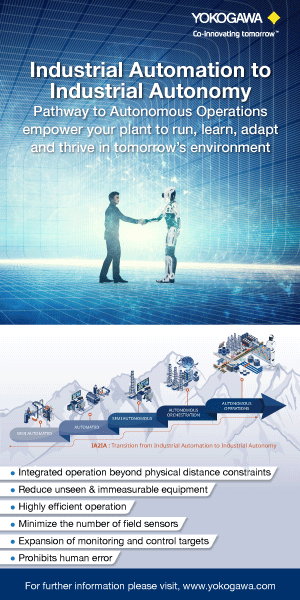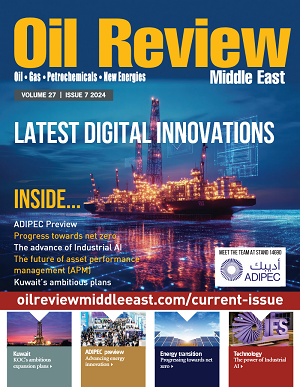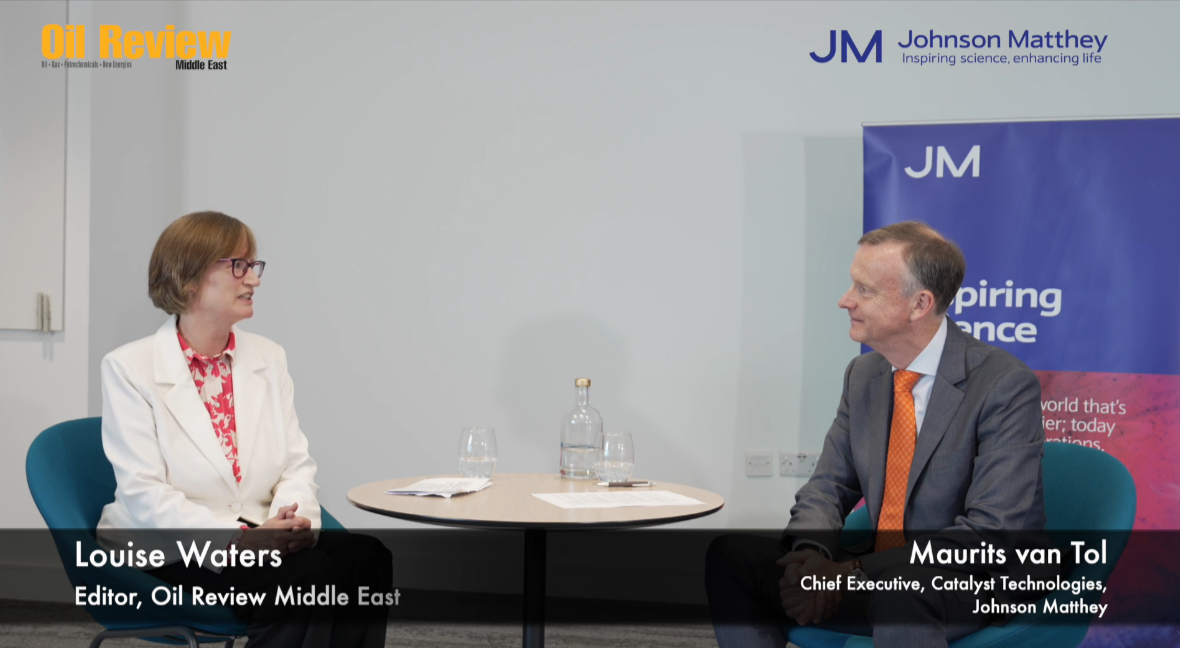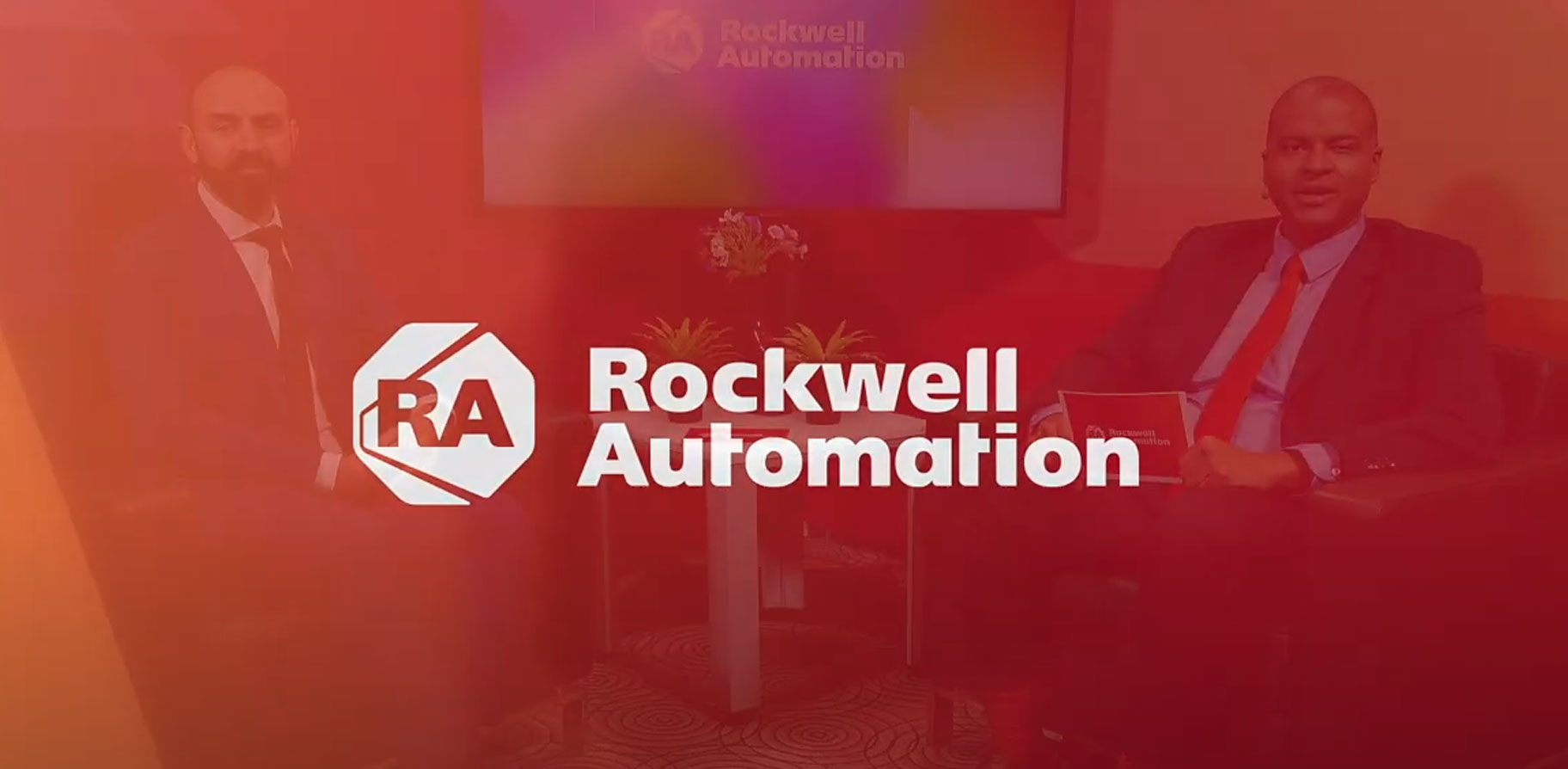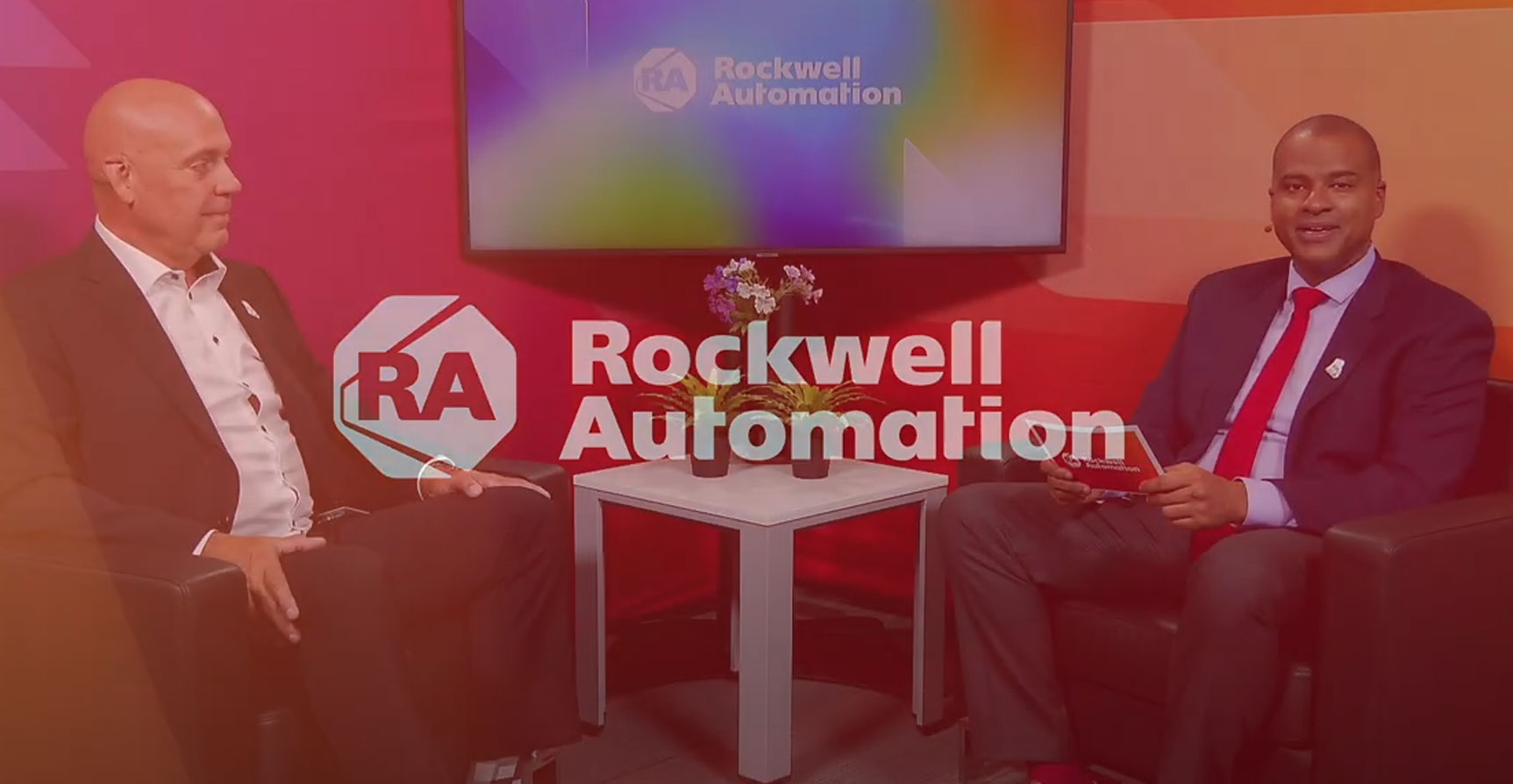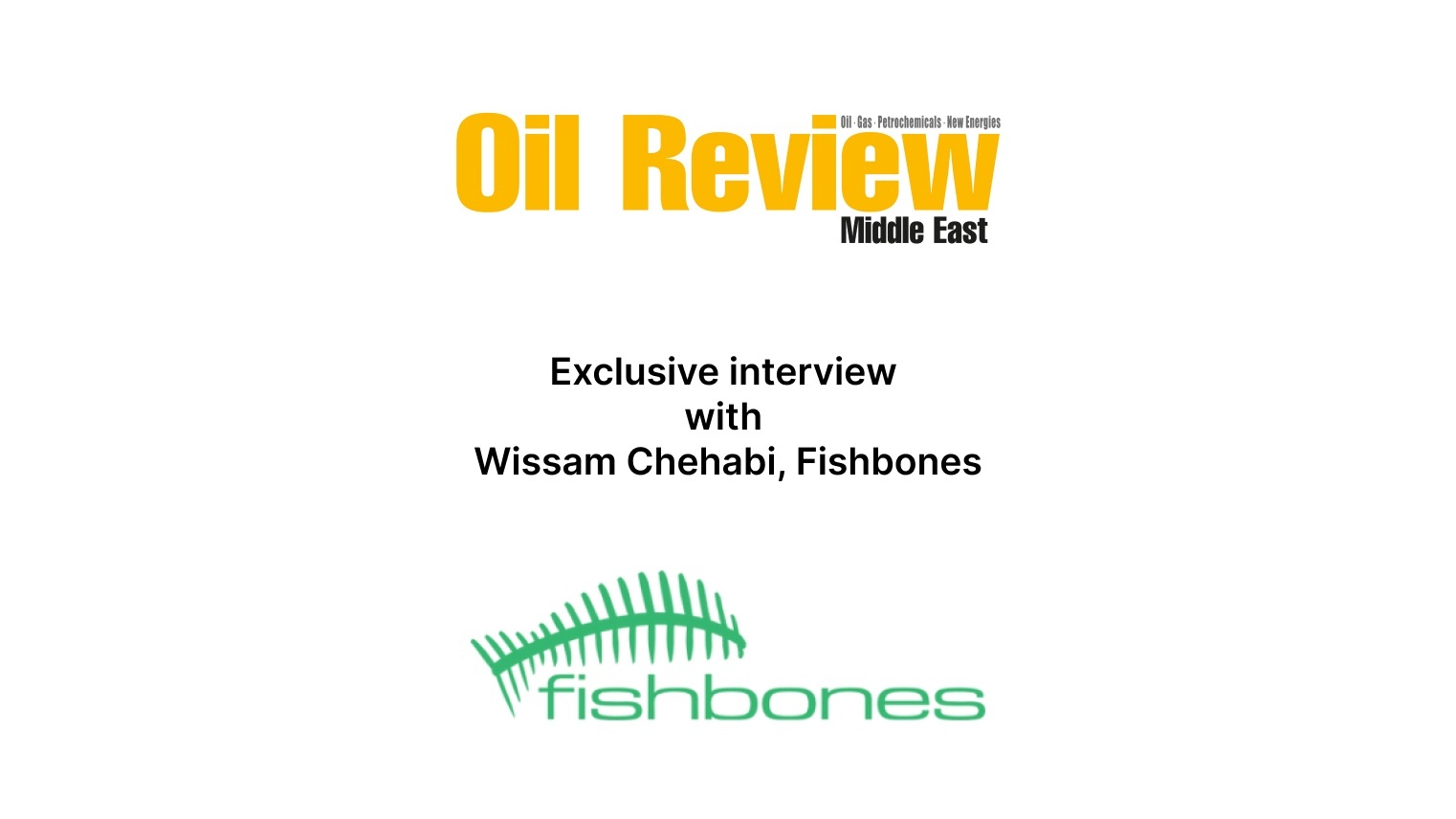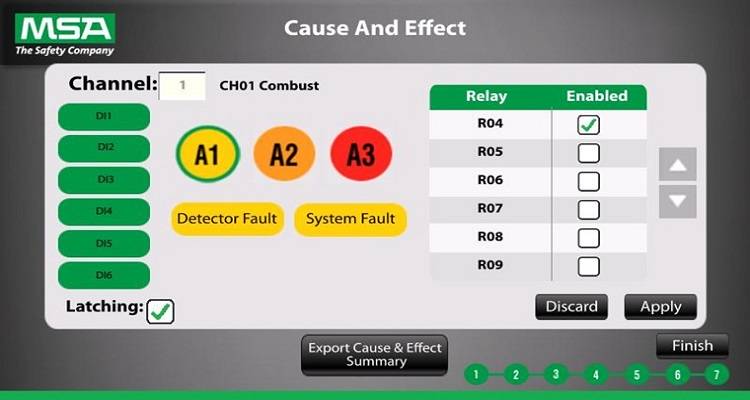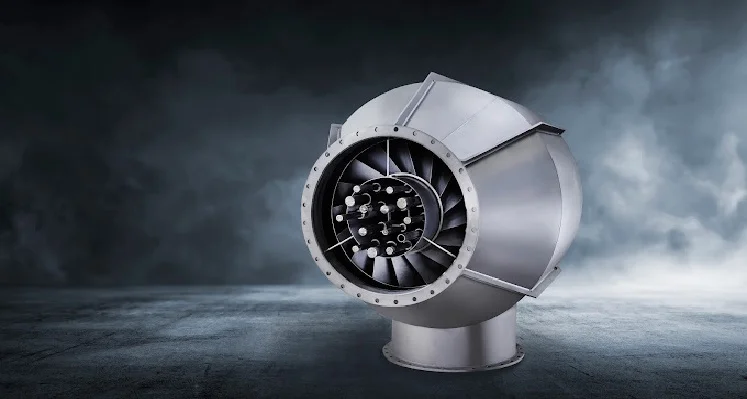In The Spotlight
International, a protective coating brand of AkzoNobel, has introduced the next evolution in epoxy passive fire protection (PFP)
Chartek ONE has been introduced as a single-coat, mesh-free solution that simplifies PFP application for assets in the energy sector by maximising efficiency, streamlining installation processes and enhancing health and safety.
As a 100% solids, boron-free two-pack material, Chartek ONE provides enhanced durability and combined corrosion, cryogenic and hydrocarbon protection. It provides three hours of jet and pool fire protection across a wide operating temperature range, effectively shielding assets from all fire types.
Chartek ONE can accelerate installation of PFP systems both in the workshop and onsite, lowering installed weight, reducing labour and material costs whilst achieving the same fire protection, which is particularly important for industries with strict weight requirements, such as offshore oil and gas. In doing so, Chartek ONE can reduce workshop hours by up to 59%, saving users both time and money throughout projects and over the lifetime of the asset.
Introduced for customers in the Middle East, Chartek ONE availability in other regions is planned for 2025.
Benefitting from technical experience
“Chartek stands at the forefront of the industry, offering a comprehensive range of solutions that reflect our heritage and track record of success,” remarked Robin Wade, global fire protection manager at AkzoNobel. “Our investment in research, development and PFP capabilities enable us to provide our customers with the best possible outcomes.
“Chartek ONE was developed in our Felling facility which is one of the world’s largest UKAS-accredited PFP testing centers for intumescent PFP. Patented polysiloxane modified thio-ether and epoxy technology resolves many of the pain points found in the provision and longevity of epoxy PFP in one simple solution. International is a dedicated partner and through the celebrated history of Chartek, we are committed to excellence in technical support, product specific engineering solutions, and delivering class-leading products.”
Chartek benefits from a presence in the industry spanning more than half a century. As passive fire protection, it excels in the most demanding conditions and the range is one of the world's most complete portfolio of epoxy intumescent PFP coatings available, according to the company.
Formulated and tested against critical industry standards for energy assets including NORSOK M-501:2022 Edition 7 and ISO 22899 (standard and high heat flux jet fires), Chartek ONE is free from boron and has a 100% solids formula to reduce occupational risks and improve HSE performance and footprint.
“We are thrilled to be introducing Chartek ONE for our Middle East customers at ADIPEC 2024,” added Andy Holt, business development manager - Middle East at International. “Crafted to offer our customers superior safety, reliability, and peace of mind, Chartek ONE showcases our continued dedication to sustainability and innovation.
“This single-coat, mesh-free solution will drastically simplify PFP projects for our customers, minimizing downtime and reducing overall project costs. Our commitment to considering the environmental impact of our work is an integral part of the development process. Chartek ONE’s 100% solids, boron-free formula, stands as a testament to this commitment.”
The potential of Artificial Intelligence (AI) to transform the energy industry and accelerate decarbonisation has emerged as a critical topic of conversation amongst energy ministers and business leaders at ADIPEC 2024
On the opening day, Sultan Ahmed Al Jaber, UAE Minister of Industry and Advanced Technology and ADNOC managing director and Group CEO, emphasised the critical need for industry leaders to come together and support era-defining breakthroughs such as AI.
In a session titled 'The power of AI for the energy transition', top executives from the private sector - including Tayba Al Hashemi, CEO, ADNOC Offshore, ADIPEC 2024 chairperson; Michel Lutz, chief data officer and digital factory head of Data & AI, TotalEnergies, and Magzhan Kenesbai, acting managing director, AIQ - explored how AI is transforming business operations, and offered their expert insights on the long-term implications of wide-scale AI implementation.
Speaking to his company’s experience with AI, Lutz said, “We are using AI to improve operational efficiency, which supports our company's development in the renewables space. This allows us to better assist our clients in understanding their behaviour and what they need.”
Building on this sustained focus on AI’s role in the energy industry, speakers across ADIPEC’s 10 different conferences emphasised the pressing need to address the challenges and opportunities surrounding this transformative technology. Alongside other top CEOs and energy executives, Tengku Muhammad Taufik, president and Group CEO, PETRONAS, urged industry players to adopt a measured and holistic approach to AI, saying,“Before we perfect artificial intelligence, we need to address fundamental issues. AI can initiate either a virtuous or vicious cycle, depending on how we utilise this technology and how we feed it. While AI consumes a significant amount of energy and its production requires vast resources, it nonetheless helps economies and societies grow. It is up to us to respond wisely to the fork in the road ahead.”
Anima Anandkumar, Bren professor of computing and mathematical Sciences, Caltech, highlighted the evolving impact of AI on both the energy industry and the environment, saying, “We should consider not just the energy reduction achieved using AI, but also the time and money saved by employing these AI models. AI is helping us take corrective action in response to natural disasters and other climate-related issues, and the more data we have available, the better our AI models will become. The impact that AI can have in designing from scratch and creating simulations enhances our work in energy and technology.”
ADIPEC’s commitment to accelerating AI-enabled energy solutions and projects was reflected in the event’s inaugural AI Zone, which featured AI studios and demo pods that showcased transformative solutions from leading energy and AI businesses. This dynamic space provided attendees with a comprehensive view of the innovations shaping the future energy system.
The space also played host to the dedicated AI Conference, where leaders from the energy, technology, and government sectors worked together to develop a strategic roadmap for integrating AI into the energy landscape.
The newly launched Digitalisation & Technology Conference delved into how next-generation technologies, including AI, can unlock decarbonisation and efficiency opportunities presented by Industry 4.0. Sessions covered advancements in new materials, the Industrial Internet of Things (IIoT), and carbon capture, utilisation, and storage (CCUS), with a focus on sustainable scaling of these technologies.

ENERGYai will combine large language model technology with cutting-edge agentic AI. (Image source: Adobe Stock)
ADNOC and AIQ has announced at ADIPEC the launch of ENERGYai, the first-of-its-kind custom-built agentic artificial intelligence (AI) solution for the global energy transformation
ENERGYai will combine large language model technology with cutting-edge ‘agentic’ AI – AI ‘agents’ that are trained in specific tasks across ADNOC’s value chain. These specialised AI agents bring a new level of autonomy and precision to critical tasks, from seismic analysis to energy efficiency and real-time process monitoring. Designed for seamless integration into existing workflows, the agents harness state-of-the-art machine learning and predictive analytics, improving decision-making and operational efficiency.
This innovation underscores ADNOC’s commitment to pioneering sustainable, data-driven solutions that elevate industry standards. Developed by AIQ in collaboration with G42 and Microsoft, ENERGYai will integrate best-in-class technologies, including open subsurface data universe (OSDU) frameworks and OpenAI models.
Sultan Ahmed Al Jaber, UAE Minister of Industry and Advanced Technology and ADNOC managing director and Group CEO, said, “ENERGYai marks a major milestone in ADNOC’s journey to be the world’s most AI-enabled energy company and a key enabler of the global energy transformation. It will be a powerhouse for value creation and sustainable energy production and will leverage petabytes of data to better empower our people and unlock innovative solutions across our value chain. As AI accelerates the pace of progress and transforms industries, ENERGYai will help future-proof ADNOC, reinforce our position at the forefront of AI deployment and ensure we continue to provide secure and sustainable energy to the world.”
Peng Xiao, Group CEO of G42, said, "ENERGYai embodies G42’s commitment to transforming global energy through AI, delivering real-time, data-driven insights and deploying agentic AI to enhance efficiency, resilience, and sustainability. By combining ADNOC’s industry leadership and petabytes of historical data with G42’s advanced AI capabilities, and collaborating with Microsoft, we are creating a strong foundation for the future of energy—empowering leaders to make strategic choices that drive sustainable progress."
“Across the full value chain of traditional and renewable energy sectors, AI technologies can optimize energy usage, improve safety, reliability and efficiency, reduce emissions and accelerate low- and no-carbon energy solutions,” said Darryl Willis, corporate vice president - energy and resources industry at Microsoft. “We are pleased to be collaborating with ADNOC and AIQ in the development of AI-powered solutions that can drive economic growth, address energy security and equity, and advance a net-zero future for all.”
Trained on ADNOC’s 80 years of data, the ambitious three-year development programme for ENERGYai will begin testing with real-world datasets by the end of 2024 in a number of specific areas. It is projected that ENERGYai will accelerate by up to 75% the building of detailed geological models using very large and diverse datasets to support planning and development of large-scale CO2 storage solutions.
In development planning, ENERGYai will accelerate plans from 1-2 years to weeks, minimising costs and emissions in the process. ENERGYai can analyse multiple scenarios in parallel and this ability to run detailed, highly advanced simulations across all variables helps make faster and more accurate decisions. Further along the value chain in the downstream business, the platform's future-proof and scalable design integrates seamlessly with ADNOC’s existing technologies and platforms.
Eni and BP have resumed their exploration activities in Libya after halting drilling operations in the onshore region in 2014, according to Libya’s National Oil Corporation (NOC)
This follows the formal revocation of force majeure status by Eni and NOC in August 2023 on exploration areas A&B (onshore) and C (offshore), where Eni is operator with 42.5% along with bp (42.5%) and Libya Investment Authority (15%), as a result of a favourable security assessment. Some of these areas are close to the Wafa gas facilities that export production to Italy.
On October 26, Eni began its exploration activities in the Area B (96/3) of Ghadames Basin, where the first exploratory well, A1-96/3 (Hasheem Prospect), was drilled. This well is the first under the contractual obligations for Area B in Ghadames Basin, according to the Fourth Bid Round Contract of 2007. Mellitah Oil & Gas, which has extensive experience in the region, particularly in developing and managing the Wafa field, is overseeing the drilling operations and all related activities for this well.
Several promising geological formations in the A1-96/3 well are set to be tested, which are expected to contain both oil and gas. The well is projected to reach a final depth of approximately 3,147 m.
The A1-96/3 well is located around 35 km from the Wafa field and approximately 650 km from the capital, Tripoli.
Eni is the leading international gas producer in Libya, where it has been operating since 1959, and currently has a large portfolio of assets in exploration, production and development. Production activities are operated through the joint venture company Mellitah Oil and Gas BV (Eni 50%, NOC 50%).
Repsol and OMV are also set to restart operations sin the Murzuq Basin and Sirte Basin respectively, NOC says.

Haytham Yehia, general manager, Middle East and Central Asia Region, Shell Lubricants. (Image source: Shell Lubricants)
Haytham Yehia, general manager for Middle East and Central Asia Region for Shell Lubricants, discusses the outlook for the lubricants market in the region and the impact of sustainability considerations
What is the outlook for the base oil and lubricants market in the GCC region, and are there any trends you would highlight?
The GCC region offers a dynamic and evolving landscape for the lubricants market. The growth we’re seeing across both industrial and consumer sectors is not just driven by economic activity, it’s driven by a deep shift in how industries are approaching efficiency and performance. In the UAE, the rise in construction and infrastructure projects is fuelling demand, while Iraq’s oil and gas sector is seeing a resurgence, pushing growth in the lubricants market.
But it’s not just about volume, it’s about the shift towards higher-performing, synthetic lubricants. As more modern engines and industrial equipment are introduced, the need for advanced lubrication solutions becomes critical. At Shell, we’re focused on meeting these demands with products designed for today’s challenges and tomorrow’s innovations. Markets like the UAE, Iraq, and Oman are at the forefront of this transformation, and the trends we’re seeing here will set the stage for the broader region.
To what extent is sustainability a factor impacting the lubricants market?
Sustainability is no longer a nice-to-have; it’s a necessity. At Shell, we believe that our role in the market goes beyond providing lubrication solutions, it’s about supporting a sustainable future. Our introduction of the Shell PANOLIN range in the Middle East is a testament to that commitment, addressing the uptick in demand for more sustainable products, especially in sectors such as construction, agriculture, renewable power, hydropower and offshore wind sectors. These biodegradable lubricants provide high performance lubrication while also having the ability to degrade naturally. Biodegradable lubricants help to contribute to a more sustainable future, offering greater protection for wildlife and ecosystems in the event that they come into contact with the environment, in comparison to conventional lubricants. This enables our customers to reduce the risks of operating in sensitive environments.
The portfolio includes biodegradable lubricants for hydraulics, gears, universal tractor transmission oils, engine oils (HDEO), turbine oils, and greases for machine lubrication, including leading OEM-approved products. They are designed with the future in mind, delivering high performance while minimising environmental impact.
How is the carbon-neutral lubricants market developing, and what is the role of these products in reducing emissions and promoting sustainable practices across industries?
The move towards carbon-neutral lubricants is a powerful shift that’s changing the way industries operate. In the Middle East, industries are beginning to embrace carbon-neutral solutions, not just to meet regulatory requirements but as proactive lever in reducing their emissions. At Shell, our carbon-neutral lubricants, alongside initiatives such as our sustainable packaging innovations at the Oman plant, are tangible solutions for businesses to help reduce their environmental impact while maintaining operational efficiency.
Carbon neutrality is about more than just compensating emissions, it’s about designing products and solutions that actively help our customers avoid and reduce their carbon footprints. As industries shift towards more sustainable practices, the role we want to play is to provide our customers products and services that help make their transition possible, and our continued innovation in this space helps ensure we stay ahead of the curve.
How is EV adoption impacting the lubricants market in the region?
The shift to electric vehicles brings both new opportunities and challenges. While traditional lubricants like engine oils are in lower demand for EVs, the need for specialised fluids is increasing. These include transmission fluids, greases, and thermal management fluids, which play a critical role in enhancing the efficiency, longevity, and safety of EV batteries and other key components.
EVs also shift the focus from friction management to thermal management, with cooling fluids becoming more important. In fact, EVs typically use double the amount of coolant compared to internal combustion engines, highlighting the growing importance of thermal management in electric mobility.
While regions like China, Europe, and the US lead in EV adoption, the Middle East, particularly countries like the UAE, is making significant investments in EV infrastructure. This is already beginning to influence demand for EV-specific lubricants. As the UAE targets net-zero emissions by 2050, addressing emissions from transport will be key to achieving this goal.
At Shell, we’re dedicated to advancing reliable, scalable solutions that support the growth of EVs. We’re leveraging our global expertise in advanced fluids to work with OEMs and co-engineering partners to optimise EV performance and efficiency. Our immersion cooling technology, for example, plays a crucial role in managing battery temperatures, ensuring safety and prolonging battery life.
Honeywell has launched a new process to improve the efficiency and sustainability of light olefin production
The naphtha to ethane and propane (NEP) technology generates a tunable amount of ethane and propane from naphtha and/or LPG feedstocks, generating more high-value ethylene and propylene with reduced production of lower-value by-products compared to a traditional mixed-feed steam cracking unit and resulting in net cash margin increases. An NEP-based olefins complex also reduces CO2 intensity per metric ton of light olefins produced by 5 to 50% versus a traditional mixed-feed steam cracker.
More efficient production
“The petrochemical industry faces strong competition and challenges in obtaining raw materials globally,” said Matt Spalding, vice president and general manager of Honeywell Energy and Sustainability Solutions in MENA. “Our technology helps to enable more efficient production of ethylene and propylene, two chemicals which are in high demand, while also helping our customers lower their carbon emissions.”
The new solution is a part of Honeywell’s Integrated Olefin Suite technology portfolio to enhance the production of light olefins.
In an exclusive interview with Oil Review Middle East, Joseph El Bitar, vice president and general manager of Hexagon, speaks about the company's vision for the Middle East and its smart digital reality solutions
What are your main activities in the Middle East currently, and how do you view the market for developing your business in the region?
Hexagon is the global leader in digital reality solutions, combining sensor, software and autonomous technologies. We are putting data to work to boost efficiency, productivity, quality and safety across industrial, manufacturing, infrastructure, public sector and mobility applications. Our technologies are shaping production and people-related ecosystems to become increasingly connected and autonomous – ensuring a scalable, sustainable future.
Our main activities in the Middle East focus on supporting the region’s specific needs with advanced digital solutions. We empower customers to unlock data, accelerate industrial project modernisation and digital maturity, increase productivity, and move the sustainability needle.d our footprint by partnering with local stakeholders, governments and industries to accelerate this transformation.
How are your smart digital reality solutions helping companies in the energy sector to enhance safety and efficiency?
Hexagon’s Asset Lifecycle Intelligence division has been instrumental in integrating AI and digital solutions to improve efficiency and enhance safety in energy services. One of our flagship initiatives is the deployment of a digital backbone (which is also called digital twin or Smart Digital Reality™), which creates a virtual replica of physical assets and integrates with existing solutions. This digital twin enables real-time monitoring, predictive maintenance and optimization of operational systems, resulting in significant cost savings and reduced asset downtime. We go beyond a mere physical replica to create a comprehensive digital solution.
For example, our collaboration with leading EPCs on AWP, Smart Materials and Smart Completion has achieved remarkable results in projects. By utilising AI-driven analytics and digital workflows, we have streamlined project production management (PPM) and automation in project material management. This has resulted in a reduction in the project timeline and a decrease in material wastage
What are the benefits of your new HxGN SDx2 solution? Are there any other products or enhancements you would like to highlight, and how are advancements in AI and technology impacting your offering?
HxGN SDx2 is Hexagon’s next-level, cloud-native SaaS solution that integrates critical data, promoting transparency, efficiency, productivity, and more informed decision-making while mitigating risks and reducing costs. It reshapes operational boundaries for organisations engaged in digital transformation. Its robust features unveil and nurture previously untapped opportunities, positioning organisations for sustainable profitability through engineering and operational excellence.
The key to HxGN SDx2 is unprecedented accessibility and usability of data. It breaks down information silos across the asset lifecycle and improves the relationship between digital and human workflows across projects, assets, and operations. It forms a ‘digital thread’ of information that grows stronger as more systems connect to it and users leverage its power to better inform their day-to-day decisions and responsibilities.
What was your focus at ADIPEC this year?
At ADIPEC this year, our primary focus was on showcasing autonomous technologies and smart digital reality solutions that address the evolving challenges and opportunities in the Middle East region. With the industry's shift towards sustainability and digital transformation, we presented technologies that enhance operational efficiency, improve safety, and support the global transition to cleaner energy.
This year, ADIPEC's theme – “Exploring the power of energy in accelerating an economy-wide transformation that delivers for people, the planet, and our collective prosperity” – aligns seamlessly with our own vision of creating sustainable solutions for the energy industry.
Our theme for this year, “Two worlds, one sustainable reality,” encapsulates our approach to bridging traditional and emerging energy systems. We focus on integrating cutting-edge technologies, digital transformation tools, and advanced data analytics, with existing infrastructures. By doing so, we aim to accelerate the shift toward a sustainable energy reality –one that balances economic growth, environmental stewardship, and social well-being.
The offshore operations landscape is evolving at an unprecedented pace, making it crucial to keep up with advancements in efficiency and sustainability.
Oil Review Middle East is hosting an exclusive webinar on 20 November at 2pm GST, entitled ‘The future of offshore operations: innovation, efficiency and sustainability’. It will bring together industry leaders and experts to explore the latest trends in offshore operations, focusing on groundbreaking innovations that are driving sustainable and efficient practices. One of the highlights will be a presentation on SAFEEN Green—a revolutionary unmanned surface vessel (USV) shaping the future of the offshore industry.
Key highlights:
Offshore trends: expert insights into industry shifts and sustainability influences
Complex challenges: addressing the environmental and resource-focused dynamics shaping operations
AD Ports Group vision: discover how SAFEEN Green is setting new benchmarks for sustainable operations
Innovation in SAFEEN Green: A closer look at the groundbreaking technology behind this transformative USV.
Practical insights: Learn strategies to boost efficiency and encourage responsible practices in offshore work.
Speakers are Erik Tonne, managing director and head of market analysis, Clarksons Platou; Tarek Al Marzooqi, CEO, SAFEEN Subsea, AD Ports Group; and Ronald J Kraft, CTO, Sovereign Global Solutions ME and RC Dock Engineering BV.
Don’t miss out on this opportunity to gain exclusive insights into the future of offshore operations!
Register here

Geothermal energy is fast gaining traction as a important source of renewable energy. (Image source: Synergy Consulting)
Synergy Consulting discusses the potential of geothermal energy
Geothermal energy is fast gaining traction as a important source of renewable energy, harnessed from the immense heat stored beneath the Earth’s surface. This heat, originating from the planet’s core, is generated by the decay of radioactive materials and the residual energy left from the Earth's formation over four billion years ago. This geothermal energy that lies within the Earth’s crust can then be tapped to produce electricity or used directly for heating purposes, offering a clean and reliable power source.
Located roughly 2,900 km below Earth’s crust, the core is the hottest part of the planet. Although some of the core’s heat is residual from Earth's formation, the majority is continuously produced by the natural decay of radioactive isotopes like potassium-40 and thorium-232. This process sustains geothermal heat as a renewable resource.
When underground rock formations are heated to extreme temperatures of 700-1,300°C (1,300-2,400°F), they can become magma -– molten rock filled with gas bubbles. Magma exists deep in the Earth’s mantle and lower crust, sometimes rising to the surface as lava. This magma heats nearby rocks and underground water reservoirs, which can be released through natural outlets such as geysers, hot springs, and steam vents.
Geothermal power plants
Geothermal power plants are built on this principle and capitalise on the natural heat by using steam or hot water reservoirs beneath the Earth’s surface to drive turbines connected to electricity generators. In some cases, water is injected into the ground to be heated and brought back to the surface for energy production. This process is not only efficient but also relatively low in emissions compared to fossil fuel-based energy sources.
While still a niche technology, geothermal energy already plays a substantial role in power generation for several countries. Iceland, El Salvador, New Zealand, Kenya, and the Philippines rely heavily on geothermal energy to meet their energy needs. The United States has also been a long-standing pioneer in this field, with its first geothermal district heating system established in 1892 in Boise, Idaho. This system still provides heat to hundreds of homes over a century later.
In 2022, geothermal energy generated approximately 92bn kilowatt-hours (kWh) of electricity across 24 countries, according to the International Energy Agency (IEA). The European Commission notes that deep-geothermal energy has the highest capacity factor among renewable sources, exceeding 80%. This high efficiency makes geothermal a highly scalable option for industrial-scale energy production. Projections from the IEA’s Sustainable Development Scenario anticipate that global geothermal power will triple by 2030, from 92 terawatt-hours (TWh) in 2019 to 282 TWh.
As the world faces increasing demand for energy, geothermal power offers a reliable, clean, and efficient way to augment traditional energy sources. With its high potential for scalability, it could play a crucial role in meeting global energy needs while reducing dependence on fossil fuels.
This article is authored by Synergy Consulting IFA.

















